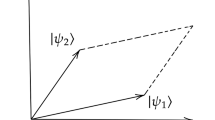Abstract
Quantum entanglement of pure states of a bipartite system is defined as the amount of local or marginal (i.e. referring to the subsystems) entropy. For mixed states this identification vanishes, since the global loss of information about the state makes it impossible to distinguish between quantum and classical correlations. Here we show how the joint knowledge of the global and marginal degrees of information of a quantum state, quantified by the purities or, in general, by information entropies, provides an accurate characterization of its entanglement. In particu-lar, for Gaussian states of continuous variable systems, we classify the entanglement of two-mode states according to their degree of total and partial mixedness, comparing the different roles played by the purity and the generalized p-entropies in quantifying the mixedness and bounding the entanglement. We prove the existence of strict upper and lower bounds on the entanglement and the existence of extremally (maximally and minimally) entangled states at fixed global and marginal degrees of information. This results allow for a powerful, operative method to measure mixed-state entanglement without the full tomographic reconstruction of the state. Finally, we briefly discuss the ongoing extension of our analysis to the quantification of multipartite entan-glement in highly symmetric Gaussian states of arbitrary 1 × N-mode partitions.
Similar content being viewed by others
References
E. Schrödinger, Discussion of probability relations between separated systems (I), Proceedings of the Cambridge Philosophical Society 31, (1935), p. 555.
M. A. Nielsen and I. L. Chuang, Quantum Computation and Quantum Information, Cambridge University Press, Cambridge, 2000.
L. Henderson and V. Vedral, Phys. Rev. Lett. 84, 2263 (2000).
S. L. Braunstein and A. K. Pati, eds., Quantum Information Theory with Continuous Variables, Kluwer, Dordrecht, 2002.
S. L. Braunstein and P. van Loock, quant-ph/0410100, and Rev. Mod. Phys., to appear.
R. Simon, E. C. G. Sudarshan, and N. Mukunda, Phys. Rev. A 36, 3868 (1987).
J. Williamson, Am. J. Math. 58, 141 (1936); see also V. I. Arnold, Mathematical Methods of Classical Mechanics, Springer-Verlag, New York, 1978.
A. Serafini, F. Illuminati, and S. De Siena, J. Phys. B: At. Mol. Opt. Phys. 37, L21 (2004).
M. G. A. Paris, F. Illuminati, A. Serafini, and S. De Siena, Phys. Rev. A 68, 012314 (2003).
M. J. Bastiaans, J. Opt. Soc. Am. 1, 711 (1984); ibid. 3, 1243 (1986).
C. Tsallis, J. Stat. Phys. 52, 479 (1988).
A. Rényi, Probability Theory, North Holland, Amsterdam, 1970.
A. Peres, Phys. Rev. Lett. 77, 1413 (1996); R. Horodecki, P. Horodecki, and M. Horodecki, Phys. Lett. A 210, 377 (1996).
R. Simon, Phys. Rev. Lett. 84, 2726 (2000).
G. Vidal and R. F. Werner, Phys. Rev. A 65, 032314 (2002); K. Życzkowski, P. Horodecki, A. Sanpera, and M. Lewenstein, Phys. Rev. A 58, 883 (1998); J. Eisert, PhD Thesis, University of Potsdam, Potsdam, 2001.
G. Adesso, A. Serafini, and F. Illuminati, Phys. Rev. Lett. 93, 220504 (2004).
L.-M. Duan, G. Giedke, J. I. Cirac, and P. Zoller, Phys. Rev. Lett. 84, 2722 (2000).
G. Adesso, A. Serafini, and F. Illuminati, Phys. Rev. A 70, 022318 (2004).
The largest eigenvalue ~ν_+ of the partially transposed CM of a two-mode Gaussian state is always greater than 1 and so it does not enter in the computation of the logarithmic negativity (2), see [18].
C. H. Bennett, D.P. DiVincenzo, J. A. Smolin, and W. K. Wootters, Phys. Rev. A 54, 3824 (1996).
G. Giedke, M. M. Wolf, O. Krüger, R. F. Werner, and J. I. Cirac, Phys. Rev. Lett. 91, 107901 (2003).
S. Ishizaka and T. Hiroshima, Phys. Rev. A 62, 022310 (2000).
F. Verstraete, K. Audenaert, and B. De Moor, Phys. Rev. A 64, 012316 (2001); W. J. Munro, D. F. V. James, A. G. White, and P. G. Kwiat, Phys. Rev. A 64, 030302 (2001).
T.-C. Wei, K. Nemoto, P. M. Goldbart, P. G. Kwiat, W. J. Munro, and F. Verstraete, Phys. Rev. A 67, 022110 (2003).
J. Eisert and M. Plenio, J. Mod. Opt. 46, 145 (1999); F. Verstraete, K. Audenaert, J. Dehaene, and B. de Moor, J. Phys. A 34, 10327 (2001).
K. Życzkowski, P. Horodecki, A. Sanpera and M. Lewenstein, Phys. Rev. A 58, 883 (1998); K. Życzkowski, Phys. Rev. A 60, 3496 (1999).
G. Adesso, F. Illuminati, and S. De Siena, Phys. Rev. A 68, 062318 (2003).
W. K. Wootters, Phys. Rev. Lett. 80, 2245 (1998).
G. Adesso, A. Serafini, and F. Illuminati, Phys. Rev. Lett. 92, 087901 (2004).
A. K. Ekert, C. M. Alves, D. K. L. Oi, M. Horodecki, P. Horodecki, and L. C. Kwek, Phys. Rev. Lett. 88, 217901 (2002); R. Filip, Phys. Rev. A 65, 062320 (2002).
J. Fiurásek and N. J. Cerf, Phys. Rev. Lett. 93, 063601 (2004).
J. Wenger, J. Fiurášek, R. Tualle-Brouri, N. J. Cerf, and Ph. Grangier, Phys. Rev. A 70, 053812 (2004).
K. Życzkowski, Open Sys. Information Dyn. 10, 297 (2003).
Being all equivalent to two-mode entanglements, all the 1 × K entanglements can be directly compared to each other. For further details see [16].
P. van Loock, Fortschr. Phys. 50, 12 1177 (2002).
A. Serafini, G. Adesso, and F. Illuminati, quant-ph/0411109 (2004).
G. Adesso and F. Illuminati, quant-ph/0410050 (2004).
Author information
Authors and Affiliations
Corresponding author
Rights and permissions
About this article
Cite this article
Adesso, G., Serafini, A. & Illuminati, F. Entanglement, Purity, and Information Entropies in Continuous Variable Systems. Open Syst Inf Dyn 12, 189–205 (2005). https://doi.org/10.1007/s11080-005-5730-2
Received:
Issue Date:
DOI: https://doi.org/10.1007/s11080-005-5730-2




